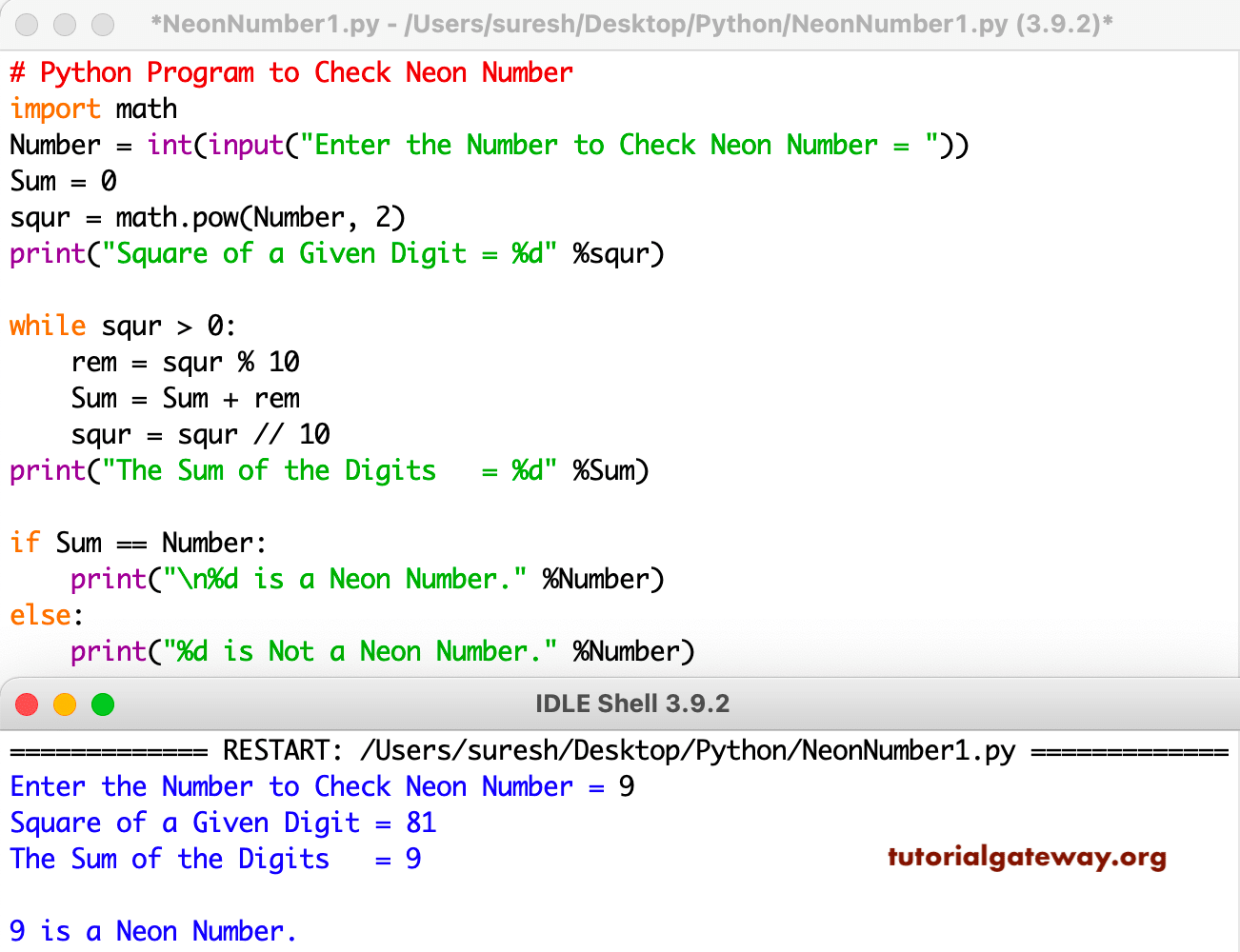Write a Python program to check a number is a neon number or not using a while loop. If a number equals the sum of square number digits, it is a neon number. For instance, 9 is because 92 = 81 and 8 +1 = 9
In this python example, first, we find the square of a number. Next, divide that square into individual digits and find the sum. If the sum equals the actual number, it is a neon number.
import math
Number = int(input("Enter the Number to Check Neon Number = "))
Sum = 0
squr = math.pow(Number, 2)
print("Square of a Given Digit = %d" %squr)
while squr > 0:
rem = squr % 10
Sum = Sum + rem
squr = squr // 10
print("The Sum of the Digits = %d" %Sum)
if Sum == Number:
print("\n%d is a Neon Number." %Number)
else:
print("%d is Not a Neon Number." %Number)

Python program to check a number is a neon number or not using recursion or recursive functions.
import math
Sum = 0
def neonNumber(squr):
global Sum
if squr > 0:
rem = squr % 10
Sum = Sum + rem
neonNumber(squr // 10)
return Sum
Number = int(input("Enter the Number to Check Neon Number = "))
squr = math.pow(Number, 2)
print("Square of a Given Digit = %d" %squr)
Sum = neonNumber(squr)
print("The Sum of the Digits = %d" %Sum)
if Sum == Number:
print("\n%d is a Neon Number." %Number)
else:
print("%d is Not a Neon Number." %Number)
Enter the Number to Check Neon Number = 44
Square of a Given Digit = 1936
The Sum of the Digits = 19
44 is Not a Neon Number.
Enter the Number to Check Neon Number = 9
Square of a Given Digit = 81
The Sum of the Digits = 9
9 is a Neon Number.The below shown program will print neon numbers from 1 to n using for loop and while loop.
import math
MinNeon = int(input("Please Enter the Minimum = "))
MaxNeon = int(input("Please Enter the Maximum = "))
for i in range(MinNeon, MaxNeon + 1):
Sum = 0
squr = math.pow(i, 2)
while squr > 0:
rem = squr % 10
Sum = Sum + rem
squr = squr // 10
if Sum == i:
print(i, end = ' ')
Please Enter the Minimum = 1
Please Enter the Maximum = 10000
1 9